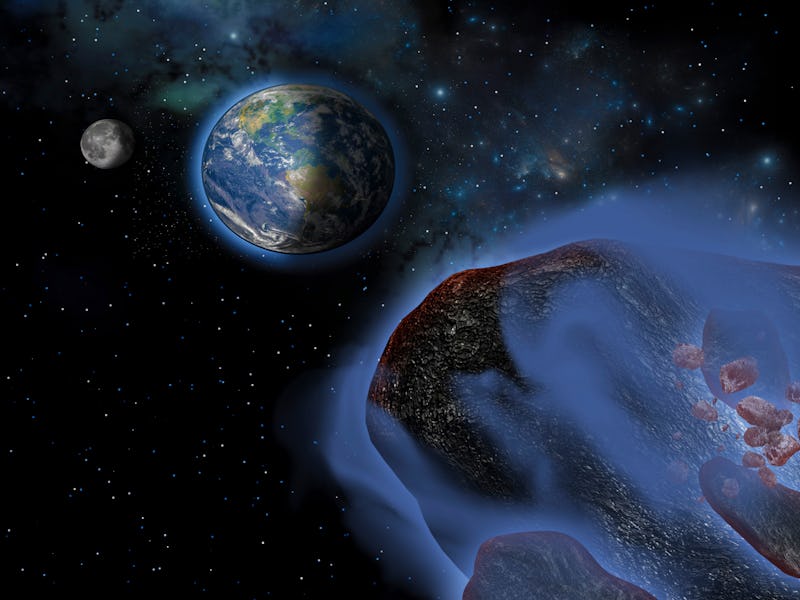Whoosh! An airplane-sized asteroid will swoop near Earth this week
Object 2020 TO2 will come within 400,000 miles of Earth at blazing-fast speeds, but worry not.

On October 10, 2020, a near-Earth asteroid was spotted for the first time. Now, two years later, the airplane-sized object is returning for a visit that will bring it within 400,000 miles of Earth.
2020 TO2 is a NEO, or near-Earth object. NEOs cross into Earth’s orbital path around the Sun. Many times these objects such as 2020 TO2, come a bit close for comfort. But there’s no need for alarm, as like most asteroids, this one is only passing by. On Saturday, October 15, it will safely pass by Earth at 6:03 p.m. Eastern.
Here is the Inverse Guide to 2020 TO2 — our cosmic visitor.
How large is asteroid 2020 TO2?
This space rock is estimated to be between 14 meters and 31 meters. That is only 101.7 foot at the most — less than half of a city block or about the size of a Boeing 737.
A Boeing 737 seen with an F-16. The incoming asteroid is about the size of the jet airliner.
How close will asteroid 2020 TO2 come to Earth?
This asteroid is crossing into Earth’s Solar orbit (Earth’s path around the Sun), therefore classifying it as an Apollo asteroid.
While astronomers are keeping a close eye 2020 TO2, the asteroid is estimated to come only as close as .00358 AU or 332,781 miles. While very close, it is still a distance from Earth.
2020 TO2, like most NEOs, is traveling very quickly — in this case, at a whopping 7.8 miles or 41,273 feet per second.
This visualization depicts known near-Earth objects as of 2018.
Will 2020 TO2 be visible from Earth?
Visibility from Earth depends on the absolute magnitude of an object. The higher the number, the fainter the object. Meanwhile, the lower the number, the brighter the object. The brightest planets in the night sky have an absolute value of at least -2.
The absolute magnitude of this NEO is 26.43, so it will not be visible to the unaided eye, or even most telescopes.
The only way to see this visitor is through talented long-exposure photography, an extremely powerful observatory telescope, or a space telescope.
With it being just half of a month before Halloween, this asteroid is giving no tricks and no treats. Still, a no-thrills asteroid is a good day for Earth.